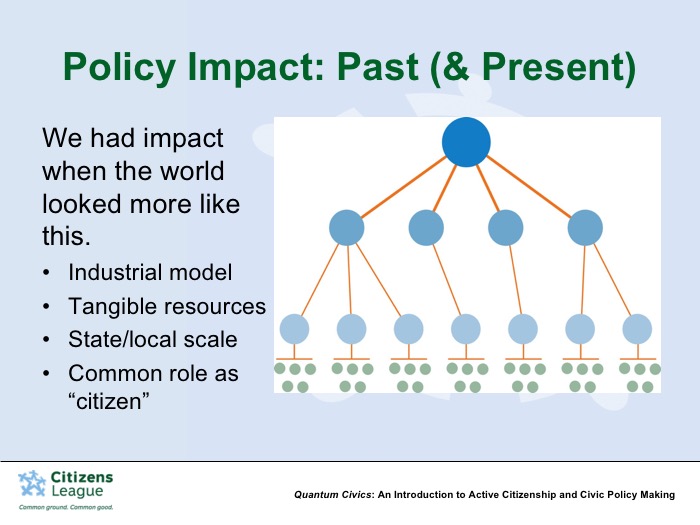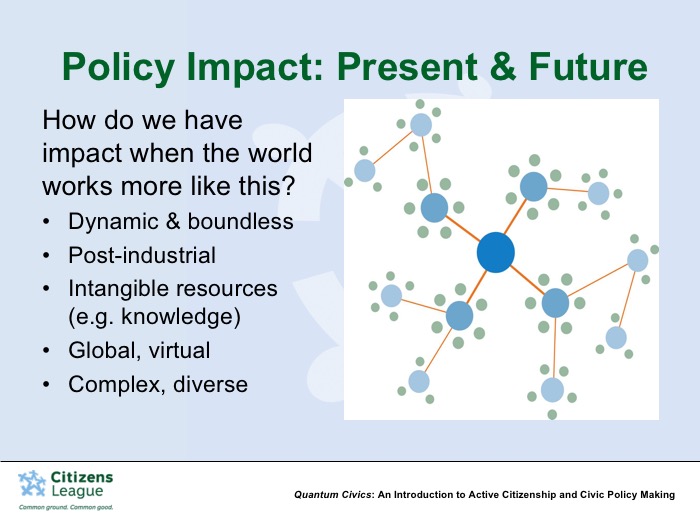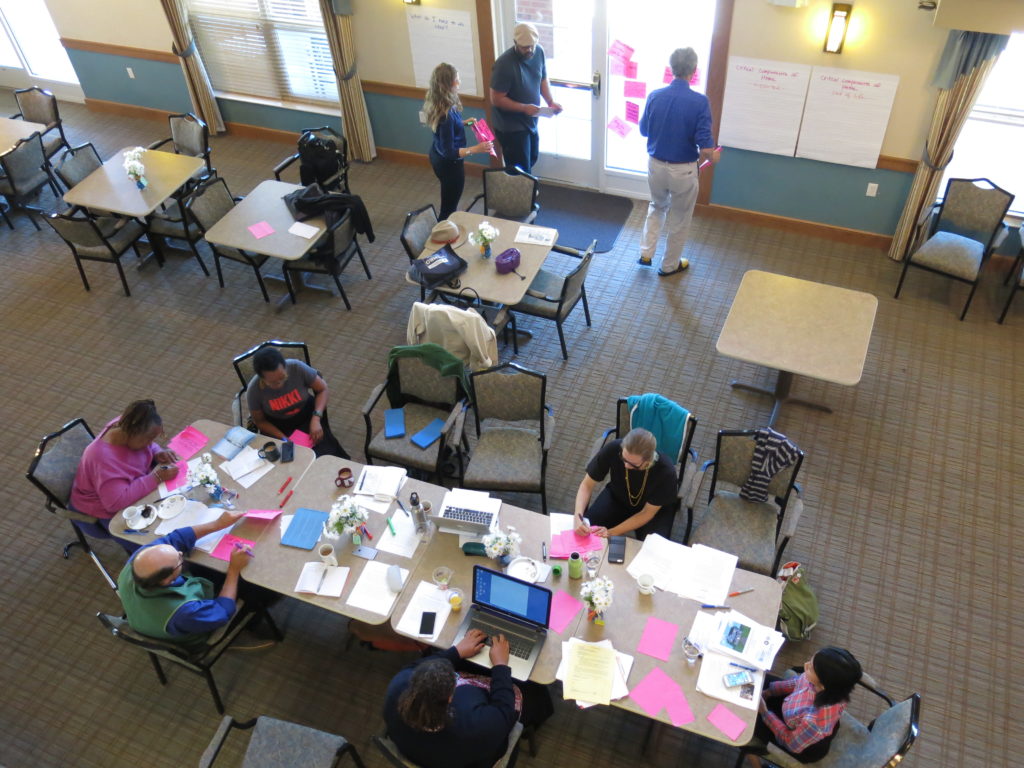Imagining New Futures: Artists & Aging Pilot
What is the future for our artists? What is the future for our aging communities? What is the role of arts in aging and policy? In The American Prospect, author Jeff Chang writes, “When artists tell new stories, they can shift the culture and make new politics possible – cultural strategy is about understanding that fact and empowering artists to do what they do best.” Artists are masters in telling stories through song, dance, theater, writing and other mediums. These stories can shift ideas and actions to shape culture, laying the foundation for shifts in policy. Chang continues stating that “…political change is the final manifestation of cultural shifts that have already occurred.” From the Civil Rights Movement to #BlackLivesMatter, artists have been critical to every cultural and social movement in history.
Understanding and empowering artists is an integral component to policy change. How do we explore resources and policies to address the challenges and assets of growing aging communities? How do we support the role of artists in aging and policy? These are vital questions inspiring a new pilot project and partnership between the Citizens League and Springboard for the Arts in Minnesota, and supported by The Pluribus Project through their Narrative Collaboratory initiative, which supports citizen power by developing new narratives and tools for participating in policy change.
Partners in Policy
Between 2010 and 2030, the number of adults age 65+ is estimated to double in Minnesota. By 2020 studies estimate that “Minnesota’s 65+ population will surpass the 5-17 school-age population for the first time.” Nationwide the United States are experiencing growth estimating that in 2050, people 65+ are “projected to be 83.7 million, almost double its estimated population of 43.1 million in 2012.” These changes impact a multitude of areas including housing, healthcare, and employment, and also spark multiple questions on how to assess and address these areas of impact. Reallocation of resources and policy reformation will need to take place to address the growing aging population in Minnesota.

Founded over 60 years ago, the Citizens League seeks creative solutions to policy challenges. Their vision of policy and who makes it is expansive. Pahoua Yang Hoffman, who develops and advances policy recommendations with the Citizens League’s members and partners, challenges the idea that policy occurs primarily in City Hall. Policy is not necessarily only rules and legality, created by lobbyists and legislators, impacting mainly elected officials and government. Hoffman instead proposes that policy is not exclusive but inclusive, not “out there” but right here, and not only the work of institutions but the work of individuals. Policy can be how an individual chooses to manage their finances or how a family decides they will cook a meal together every Friday.
The Citizens League’s Calling Home project is an “initiative looking at ‘home’ as a starting place for intergenerational conversations about aging and planning for the life changes that are inevitable.” The project works to ultimately inform policy priorities for the 2017 legislative session and related areas. In this process, they are seeking new and creative ways to share stories around aging, expanding and experimenting with community engagement, and framing potential policy impacts of their work – opportunities to collaborate with artists.

As an organization with 25 years of history working to support artists making a living and a life, Springboard for the Arts asserts that artists provide innovative and effective options for engagement and supports artists as not only creators of art but creative thinkers to be agents of change. They value the creative power and energetic questioning of artists as much as the work created by artists. Springboard for the Arts has led successful cross-sector collaborations, such as the creative placemaking work of Irrigate, and embedding artists as Artist Organizers within organizations.
The Artists & Aging pilot project was developed with the values and practices of artists as leaders in community engagement. Artist teams work with aging communities on creative projects, hold critical conversations and questions around the ideas of “home,” and share experiences and insights that can be translated to policy work. Springboard holds the primary role of managing the project and documenting artists’ projects, process, and reflections, while the Citizens League serves as a point of collaboration for artists by matching them with organizations working in the field of aging as well as providing information, connections and feedback on public components of artist projects. The goal of this partnership is to support artists to engage with community members that are traditionally underrepresented and share new stories of citizen power which can shift culture and impact policy.
Citizen-Artists at Work
For the Artists & Aging pilot project, a request for qualifications was made publicly to support four projects in 2016. Qualifications, not specific projects, were requested so the artist teams could adapt their projects and research to the communities they were to collaborate with during their project, as well as policy-related practices. As a result of this process, four artists/artist teams were selected to be part of the Artists & Aging pilot project, representing a variety of age groups, experiences and disciplines.
In September 2016, at the first meeting of the Artists & Aging cohort, Springboard for the Arts facilitated project development and Hoffman shared the framework and intentions of the Citizens League. The cohort explored the idea of “citizen artists,” artists leading creative community work who are also citizens engaged in creative policy work. They explored starting with their own areas of influence where they have a history of making change and moving to areas where they can build capacity and community.

Toward the end of the gathering, artists explored organizational partners for project collaboration and shared what excited them about the potential for the project. Filmmaker D.A. Bullock and journalist Julia Nekessa Opoti shared their excitement about engaging with communities in languages other than English and developing collaborations across language barriers through video. Playwright Amoke Kubat anticipated she would work on including men’s voices that were otherwise missing in community conversations at an elder home through creating story and photo books. Photographer Angela Jimenez was looking forward to pushing her own practice, discovering a community’s value system, working more collaboratively, and exploring the topic of isolation in relation to policy. The team from Kairos Alive! – Cris Anderson, Maria Genné, Parker Anderson-Genné, Nicholas Pawlowski, and Brianna Ristow – has a history of extensive intergenerational, intercultural participatory arts programming. The team was excited by exploring the legacy that is passed down to children, grandchildren and the larger community through story, dance, and performance. They were also interested in linking individual stories of change with policy change
Following the first meeting, artists had time to develop their projects and were partnered with organizations. The cohort arrived for a second meeting approximately one month later to focus on constructive feedback through a peer review of project proposals. Mirroring the Citizen’s League model related to policy work, the cohort experienced a cycle of defining problems, developing solutions, and implementing solutions. Artists concluded the meeting expressing relief for the opportunity to learn with a supportive structure, and excitement for the potential of creating models or approaches that could be replicated in other areas of policy work.
Artists began channeling their excitement, talent, and experience as they began their work with project partners. Bullock and Nekessa began a series of interviews exploring identity and place in the native language of immigrant elders. Jimenez initiated an exploration of social connectivity and isolation among Latino elders at the Spanish Legacy Adult Day Care Center through painting, photographs, and video. Kubat started working with elderly residents at the Dickman Apartments, a Minneapolis Public Housing site, to explore aging, ability, and the afterlife through storytelling, photographs, and scrapbooks. The Kairos Alive! team embarked on their exploration of how their research based arts and health participation programs impacts how people think and interact with aging of others and themselves during their Intergenerational Dance Halls.
Resources for Change
We can all benefit from recognizing that artists hold one of the greatest resources in the world – creativity. It is not enough to recognize this resource and its power to change, influence, shape and advance policy and our communities, it is our responsibility to provide infrastructure, opportunities, support to help artists do what they do best.Exploring and creating models for engagement with traditionally underrepresented communities to share stories of citizen power can shift culture and impact policy, and the Artists & Aging cohort is taking action towards this change. This work is in process, and as those stories and models develop, more information will be shared while the artists continue to explore crucial questions in creative ways to inform, influence and establish policies that impact all our communities.
Featured photo: Scrapbooking as part of Amoke Kubat’s project with Dickman Apartments. Photo: Keegan Xavi

[…] post by Amelia Brown originally appeared on Creative Exchange from our project partners Springboard for the […]
[…] Institute’s Pluribus Project, is one example. For Artists & Aging, which you can read about here and here, artists worked with community members and organizations to investigate the topic of aging […]